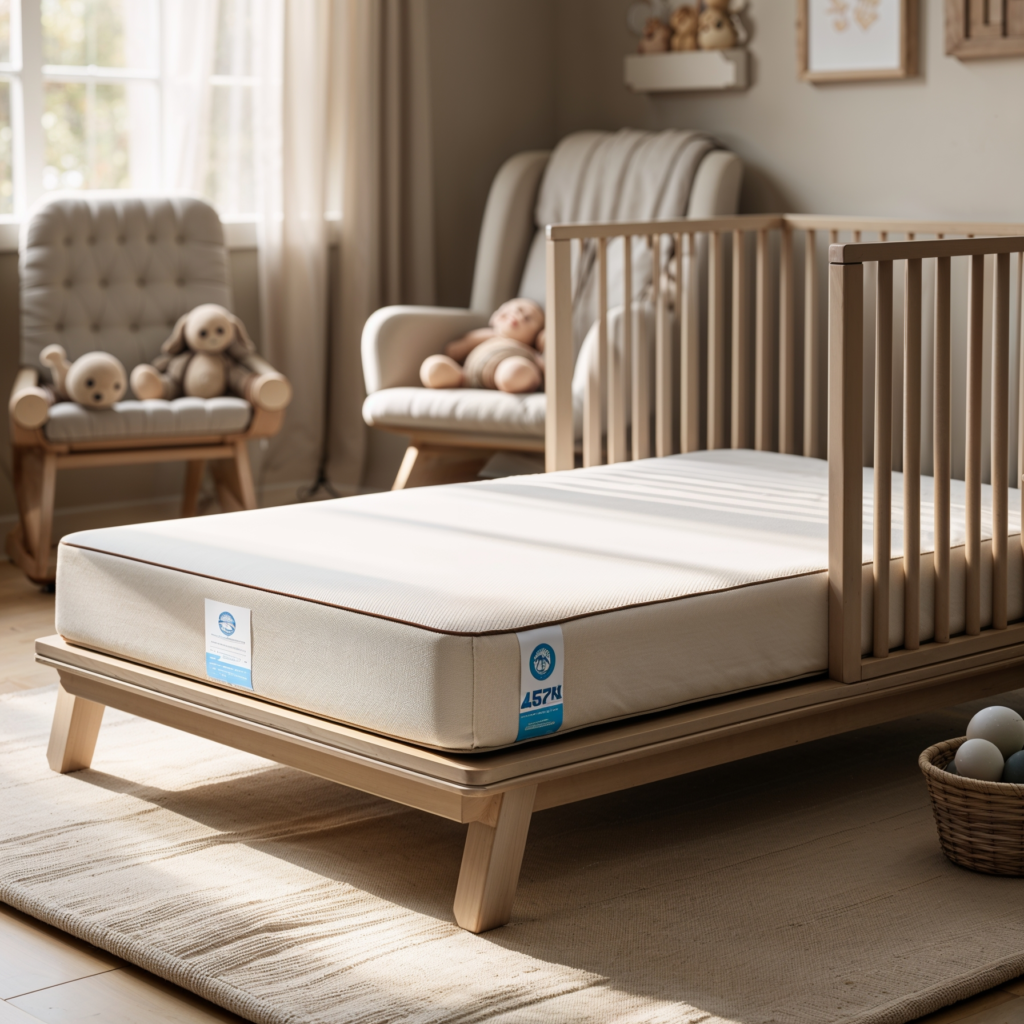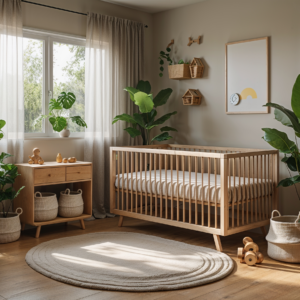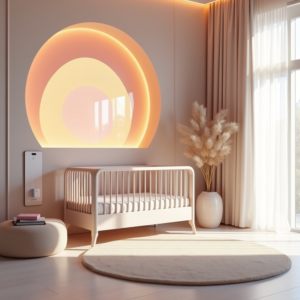The Ultimate Guide to ASTM-Certified Crib Mattress Safety
Introduction
Choosing a crib mattress is one of the most important decisions for your baby’s safety and comfort. With many options on the market, parents must understand crib mattress safety standards—especially those set by ASTM International (formerly American Society for Testing and Materials). This guide will break down everything you need to know about ASTM-certified crib mattresses, their safety requirements, and how to choose the best one for your nursery.
What Are ASTM Crib Mattress Safety Standards?
ASTM (American Society for Testing and Materials) standards ensure crib mattresses meet strict

safety, durability, and performance guidelines. The key standard for crib mattresses is ASTM F2933-23, which regulates:
- Mattress firmness – Prevents suffocation risks.
- Fit requirements – Ensures a snug fit within standard cribs.
- Flammability compliance – Reduces fire hazards.
- Chemical safety – Limits exposure to toxic substances.
These regulations help reduce the risk of Sudden Infant Death Syndrome (SIDS) and other sleep-related dangers.
Key ASTM Requirements for Crib Mattresses
1. Firmness & Thickness Limits
Crib mattresses must be firm enough to prevent sinking and no thicker than 6 inches to reduce suffocation risks. Parents can perform a firmness test by pressing on the mattress—if it doesn’t quickly bounce back, it’s too soft.
2. Proper Fit to Prevent Gaps
According to ASTM F2933, there should be no more than a two-finger gap between the mattress and crib walls. Loose-fitting mattresses pose entrapment hazards, increasing the risk of suffocation.
3. Fire Safety & Flammability Standards
Mattresses must comply with 16 CFR Part 1632 & 1633 (federal fire safety regulations) to prevent fast-spreading fires. Many parents opt for non-toxic, flame-retardant-free crib mattresses to avoid chemical exposure.
4. Chemical Safety & VOC-Free Materials
Many traditional crib mattresses contain volatile organic compounds (VOCs), phthalates, and flame retardants, which can off-gas and harm developing lungs. ASTM-certified mattresses should be free from harmful chemicals, with certifications like:
- GREENGUARD Gold – Ensures low chemical emissions.
- CertiPUR-US – Confirms safe, non-toxic foam.
- GOTS (Global Organic Textile Standard) – For organic cotton covers.
How to Choose an ASTM-Certified Crib Mattress
1. Look for ASTM Certification – Check packaging or manufacturer websites for ASTM F2933 compliance.
2. Prioritize Firmness – Softer mattresses increase suffocation risks—always choose a firm sleep surface.
3. Opt for a Snug Fit – Ensure the mattress fits flush against crib walls with no gaps.
4. Avoid Harmful Chemicals – Choose GREENGUARD Gold-certified, flame-retardant-free mattresses.
5. Select Waterproof or Breathable Covers – Protect against spills while maintaining good airflow.
Top ASTM-Certified Crib Mattresses for 2024
✅ Naturepedic Organic Crib Mattress – GOTS-certified organic materials, waterproof, GREENGUARD Gold certified.
✅ Newton Baby Crib Mattress – 100% breathable design, GREENGUARD Gold certified, washable cover.
✅ Sealy Soybean Foam-Core Mattress – ASTM-compliant, hypoallergenic, and CertiPUR-US certified.
Final Thoughts
When it comes to crib mattress safety standards, ASTM certification is a non-negotiable factor. Parents should always choose a firm, snug-fitting, chemical-free crib mattress to ensure a safe sleeping environment. By following ASTM guidelines, you can make an informed decision that prioritizes your baby’s health and safety.
Would you like personalized crib mattress recommendations for your nursery? Let us know in the comments!





